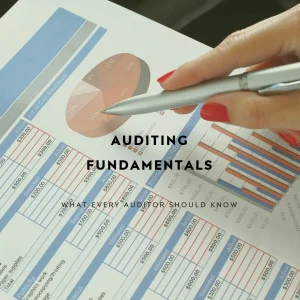In the realm of internal auditing, a risk audit serves as a critical tool for organizations to identify, assess, and mitigate potential risks that could hinder their operational effectiveness and strategic objectives.
A risk audit is a systematic evaluation of an organization’s risk management processes and controls. Its primary objectives include:
- Identifying Risks: Recognizing potential threats that could impact the organization’s ability to achieve its goals.
- Assessing Risk Impact: Evaluating the likelihood and potential consequences of identified risks.
- Mitigation Strategies: Developing and recommending strategies to manage and mitigate these risks effectively.
By conducting risk audits, organizations can ensure that they are not only compliant with regulatory requirements but also prepared to face uncertainties in a proactive manner.
The concept of risk audits has evolved significantly over the years. Traditionally, internal audits focused primarily on compliance and financial accuracy. However, as organizations faced increasingly complex and dynamic environments, the need for a more comprehensive approach became evident.
- Shift to Risk-Based Auditing: The shift towards risk-based auditing reflects a broader understanding of risk management, where internal auditors prioritize high-risk areas to enhance audit efficiency and effectiveness. This evolution has been driven by the need for organizations to adapt to rapid changes in technology, regulations, and market conditions [7][9].
- Integration of Data Analytics: The incorporation of data analytics into risk audits marks a significant advancement. By leveraging data analytics, auditors can analyze large datasets to identify trends, anomalies, and potential risks more effectively. This not only improves the accuracy of risk assessments but also enhances the overall quality of audits [6][10].
Effective risk assessment is paramount for organizational success for several reasons:
- Informed Decision-Making: A thorough risk assessment provides management with the insights needed to make informed decisions, allocate resources efficiently, and prioritize initiatives that align with the organization’s strategic objectives [5].
- Enhanced Resilience: Organizations that conduct regular risk audits are better equipped to manage uncertainties and adapt to changes in the business environment. This resilience is crucial for maintaining competitive advantage and ensuring long-term sustainability [9].
- Regulatory Compliance: With increasing regulatory scrutiny, effective risk assessments help organizations comply with legal requirements, thereby avoiding potential penalties and reputational damage [2].
Risk audits play a vital role in the internal audit process, evolving from traditional compliance checks to a more dynamic and data-driven approach. By understanding the significance of risk audits and the role of data analytics, internal auditors and data analysts can work together to enhance organizational resilience and success.
Understanding Data Analytics in Internal Auditing
Data analytics has emerged as a transformative force in the field of internal auditing, particularly in the context of risk audits. By harnessing the power of data, internal auditors can enhance their risk assessment processes, leading to more informed decision-making and improved organizational resilience. Below, we delve into the definition of data analytics, its various forms, its role in internal auditing, and examples of tools commonly used in this domain.
Defining Data Analytics
Data analytics refers to the systematic computational analysis of data to uncover patterns, correlations, and insights that can inform decision-making. It encompasses several forms, each serving distinct purposes:
- Descriptive Analytics: This form focuses on summarizing historical data to understand what has happened in the past. It provides insights into trends and patterns, which can be crucial for identifying areas of risk within an organization [3].
- Predictive Analytics: Utilizing statistical models and machine learning techniques, predictive analytics forecasts future outcomes based on historical data. This is particularly valuable in risk audits, as it allows auditors to anticipate potential risks before they materialize [10].
- Prescriptive Analytics: This advanced form of analytics not only predicts future outcomes but also recommends actions to achieve desired results. In the context of internal audits, prescriptive analytics can guide auditors on the best strategies to mitigate identified risks.
The Role of Data Analytics in Enhancing Internal Audit Processes
Data analytics plays a crucial role in modernizing internal audit processes by enabling auditors to:
- Proactively Identify Risks: By analyzing large datasets, auditors can detect anomalies and outliers that may indicate underlying risks. This proactive approach allows for timely interventions before issues escalate [11][12].
- Enhance Risk Assessment: Data analytics provides a more comprehensive view of risk by integrating various data sources. This holistic perspective enables auditors to assess risks more accurately and prioritize their audit focus accordingly [3][15].
- Improve Fraud Detection: Advanced analytics techniques can identify patterns indicative of fraudulent activities, allowing auditors to investigate and address potential fraud more effectively [8][10].
- Streamline Audit Processes: By automating data collection and analysis, auditors can save time and resources, allowing them to focus on higher-value tasks such as strategic risk assessment and stakeholder engagement [4][14].
Examples of Data Analytics Tools Commonly Used in Internal Audits
Several data analytics tools are widely adopted in internal auditing to facilitate effective risk assessments:
- ACL Analytics: This tool allows auditors to analyze large volumes of data quickly, enabling them to identify trends, anomalies, and potential risks efficiently.
- IDEA (Interactive Data Extraction and Analysis): IDEA is designed for data analysis and visualization, helping auditors to extract insights from complex datasets and present findings in a user-friendly manner.
- Tableau: While primarily a data visualization tool, Tableau can be used to create interactive dashboards that help auditors visualize risk data and communicate findings effectively to stakeholders.
- Power BI: This Microsoft tool integrates with various data sources and provides robust analytics capabilities, allowing auditors to create reports and dashboards that enhance their risk assessment processes.
The integration of data analytics into internal auditing represents a significant advancement in the field, particularly in risk audits. By leveraging descriptive, predictive, and prescriptive analytics, internal auditors can enhance their risk assessment capabilities, leading to more effective audits and better organizational outcomes. The use of specialized tools further empowers auditors to navigate complex datasets and derive actionable insights, ultimately driving value for their organizations.
The Synergy Between Data Analytics and Risk Audits
In the evolving landscape of internal auditing, the integration of data analytics has become a pivotal element in enhancing risk assessment processes. This section delves into how data analytics not only aids in identifying potential risks but also strengthens the overall framework of risk audits.
Identifying Potential Risks with Data Analytics
Data analytics empowers auditors to conduct more robust risk assessments by analyzing historical data, industry benchmarks, and key performance indicators. By leveraging these tools, auditors can pinpoint anomalies and trends that may indicate underlying risks. For instance, data analytics tools allow auditors to focus on areas of risk by clearly recognizing notable items and anomalies, which can lead to the identification of unusual transactions or patterns that warrant further investigation [4]. This proactive approach enables auditors to address potential issues before they escalate, thereby enhancing the effectiveness of the audit process.
Integration into Risk Assessment Frameworks
The integration of data analytics into risk assessment frameworks is essential for modern internal audit teams. It involves evaluating existing capabilities and identifying areas where data analytics can enhance risk management. This strategic process not only improves the accuracy of risk assessments but also facilitates deeper insights into the organization’s risk landscape [11]. For effective implementation, it is crucial that the client provides high-quality data, ensuring that the information is accurate, complete, and relevant [8]. This foundational step allows auditors to utilize data analytics effectively, leading to more informed decision-making and risk identification.
The synergy between data analytics and risk audits is undeniable. By leveraging data analytics, internal auditors can enhance their risk assessment processes, identify potential risks more effectively, and ultimately drive more informed decision-making within their organizations. As the field of internal auditing continues to evolve, embracing data analytics will be crucial for auditors aiming to stay ahead in a complex risk environment.
Key Steps in Leveraging Data Analytics for Risk Audits
In the evolving landscape of internal auditing, data analytics plays a pivotal role in enhancing the effectiveness of risk assessments. By systematically applying data analytics, internal auditors can identify potential risks more accurately and efficiently. Below are the key steps to leverage data analytics in risk audits:
1. Identify Relevant Data Sources for Risk Assessment
The first step in utilizing data analytics for risk audits is to identify and gather relevant data sources. This includes:
- Financial Data: Transaction records, financial statements, and budgets that can highlight financial risks.
- Operational Data: Information from operational processes that may indicate inefficiencies or compliance issues.
- External Data: Market trends, economic indicators, and industry benchmarks that can provide context for risk evaluation.
- Historical Audit Data: Previous audit findings and risk assessments that can inform current evaluations and highlight recurring issues.
By consolidating these data sources, auditors can create a comprehensive view of the risk landscape [3][14].
2. Discuss Data Cleaning and Preparation Techniques
Once relevant data is identified, the next step involves cleaning and preparing the data for analysis. This process is crucial to ensure the accuracy and reliability of the findings. Key techniques include:
- Data Cleansing: Removing duplicates, correcting errors, and filling in missing values to ensure data integrity.
- Data Transformation: Standardizing formats and structures to facilitate analysis, such as converting currencies or normalizing data scales.
- Data Integration: Combining data from various sources to create a unified dataset that provides a holistic view of risks.
Effective data preparation sets the foundation for meaningful analysis and helps in avoiding misleading conclusions [5][10].
3. Detail Analytical Techniques Suitable for Risk Auditing
With clean and prepared data, auditors can apply various analytical techniques to uncover insights. Some effective methods include:
- Trend Analysis: Examining historical data to identify patterns over time, which can help predict future risks and inform proactive measures.
- Anomaly Detection: Utilizing algorithms to identify outliers or unusual patterns that may indicate fraud or operational inefficiencies.
- Risk Scoring Models: Developing models that assign risk scores based on various factors, allowing auditors to prioritize areas that require immediate attention.
These analytical techniques enable auditors to focus on high-risk areas and make data-driven decisions [6][8][9].
4. Outline a Framework for Interpreting and Reporting Findings
The final step involves interpreting the results of the data analysis and effectively communicating the findings. A structured framework for reporting should include:
- Executive Summary: A concise overview of the key findings and their implications for the organization.
- Detailed Analysis: In-depth insights into specific risks identified, supported by data visualizations and statistical evidence.
- Recommendations: Actionable steps for mitigating identified risks, including suggested controls and monitoring processes.
- Follow-Up Plan: A strategy for ongoing monitoring and reassessment of risks to ensure that the organization remains vigilant.
By following this framework, internal auditors can ensure that their findings are not only informative but also actionable, leading to improved risk management practices [4][15].
Leveraging data analytics in risk audits provides a structured approach that enhances the effectiveness of risk assessments. By identifying relevant data sources, preparing data meticulously, applying suitable analytical techniques, and reporting findings clearly, internal auditors can significantly improve their risk management capabilities.
Challenges and Considerations in Data-Driven Risk Audits
In the evolving landscape of internal auditing, the integration of data analytics has become a pivotal element in enhancing risk assessments. However, this transition is not without its challenges. Below are some of the common obstacles faced by internal auditors and data analysts when leveraging data analytics for risk audits, along with ethical considerations and strategies to overcome these hurdles.
Common Challenges
- Data Quality: The effectiveness of data analytics is heavily reliant on the quality of the underlying data. Issues such as inaccuracies, incompleteness, and inconsistencies can significantly hinder the audit process. The adage “garbage in, garbage out” underscores the importance of ensuring that only high-quality data is utilized in analytics tools [15].
- Integration Issues: Integrating various data sources can be complex. Insufficient integration of enterprise data and technology can lead to a higher likelihood of failure in achieving organization-wide audit objectives. This challenge necessitates a robust data governance framework to ensure seamless data flow and accessibility [3][5].
- Skill Gaps: There is often a disparity between the skills required for effective data analytics and the current capabilities of auditors. Training and expertise in data analytics are crucial for auditors to effectively interpret and utilize data insights in their risk assessments [8].
Ethical Considerations and Data Privacy Concerns
As internal auditors increasingly rely on data analytics, ethical considerations surrounding data privacy and confidentiality become paramount. The following points highlight key ethical dilemmas:
- Data Privacy Risks: Internal auditors must navigate the delicate balance between conducting thorough audits and respecting individuals’ privacy rights. This includes understanding the implications of data collection and usage during audits [7][12].
- Consent and Transparency: Obtaining consent for data usage and ensuring transparency in data handling practices are critical to maintaining trust and compliance with regulatory mandates [10][12].
Strategies to Overcome Challenges
To effectively integrate data analytics into risk audits, organizations can adopt several strategies:
- Enhancing Data Quality: Implementing rigorous data governance practices can help ensure data accuracy and reliability. Regular audits of data quality and the establishment of clear data management protocols are essential steps [5][15].
- Investing in Training: Organizations should prioritize training programs that equip auditors with the necessary skills in data analytics. This can include workshops, certifications, and hands-on experience with analytics tools [8].
- Fostering Collaboration: Encouraging collaboration between data analysts and internal auditors can bridge the skill gap and enhance the overall effectiveness of risk audits. This partnership can facilitate knowledge sharing and improve the interpretation of data insights [3].
- Establishing Ethical Guidelines: Developing a framework for ethical data usage can help auditors navigate privacy concerns. This includes clear policies on data collection, consent, and transparency, ensuring that ethical considerations are integrated into the audit process [12].
By addressing these challenges and considerations, internal auditors can leverage data analytics more effectively, leading to improved risk assessments and enhanced audit quality. The future of risk audits lies in the successful integration of data-driven insights, balanced with ethical practices and robust data governance.
Future Trends in Data Analytics for Risk Audits
The landscape of internal auditing is rapidly evolving, particularly with the integration of data analytics. As organizations increasingly rely on technology to enhance their audit processes, several key trends are emerging that will shape the future of risk audits. Here are some of the most significant advancements and innovations to watch for:
Advancements in AI and Machine Learning in Audit Processes
Artificial Intelligence (AI) and Machine Learning (ML) are becoming integral to the audit profession. These technologies enable auditors to analyze vast datasets efficiently, identifying patterns and trends that would be nearly impossible to detect manually. The use of AI-powered algorithms can significantly improve decision-making accuracy, reduce human error, and streamline the audit process by automating routine tasks. This shift not only enhances the quality of audits but also allows auditors to focus on more complex and strategic aspects of risk assessment [5][6][15].
The Role of Predictive Analytics in Proactively Addressing Risks
Predictive analytics is another transformative trend in risk audits. By leveraging historical data and advanced modeling techniques, organizations can forecast potential compliance breaches and cyber threats before they occur. This proactive approach allows internal auditors to address risks in real-time, rather than reacting after issues arise. The integration of predictive analytics into audit processes enhances forecasting accuracy and provides valuable insights that can inform risk management strategies [3][10][11]. As a result, auditors can develop sophisticated risk models that consider a wide range of variables, leading to more informed decision-making.
Speculating on the Future Landscape of Risk Audits Influenced by Technology
Looking ahead, the future of risk audits will likely be characterized by a greater reliance on data-driven insights and real-time analysis. The convergence of AI, ML, and predictive analytics will create a more dynamic audit environment, where auditors can continuously monitor risks and adapt their strategies accordingly. Additionally, the adoption of cloud computing and blockchain technology may further enhance the transparency and efficiency of audit processes, allowing for seamless data sharing and collaboration among stakeholders [1][12][14].
As these technologies continue to evolve, internal auditors will need to develop new skills and competencies to effectively leverage data analytics in their work. This includes not only technical proficiency in data analysis tools but also a deep understanding of the underlying business processes and risk factors that impact their organizations. By embracing these trends, internal auditors can position themselves as strategic partners in risk management, driving value and ensuring compliance in an increasingly complex business landscape [2][4][15].
The integration of data analytics into risk audits is set to revolutionize the auditing profession. By staying informed about these trends and innovations, data analysts and internal auditors can enhance their effectiveness and contribute to more robust risk management practices within their organizations.
Conclusion
In the evolving landscape of internal auditing, the integration of data analytics has emerged as a pivotal element in conducting effective risk audits. The utilization of data analytics not only enhances the accuracy of risk assessments but also empowers auditors to identify potential issues proactively. Here are the key takeaways that underscore the significance of data analytics in modern risk audits:
- Value of Data Analytics: Data analytics plays a crucial role in risk management by enabling organizations to identify, assess, and mitigate risks more effectively. By analyzing large datasets, auditors can uncover patterns and correlations that may not be visible through traditional audit methods, leading to more informed decision-making and strategic planning [1][8].
- Embracing Data Analytics: Internal auditors are encouraged to embrace data analytics as a fundamental tool in their risk assessment processes. The ability to leverage advanced analytical techniques allows auditors to conduct more robust evaluations of risk environments, ultimately enhancing the quality of their audits [5]. This shift not only improves the audit process but also adds significant value to the organization by ensuring that risks are managed proactively.
- Call to Action: To fully harness the benefits of data analytics, internal auditors should consider investing in training and tools that enhance their data analysis capabilities. By equipping themselves with the necessary skills and resources, auditors can improve their effectiveness in risk audits and contribute to a more resilient organizational framework [3].
In conclusion, the integration of data analytics into risk audits is not just a trend but a necessity for modern internal auditing practices. By prioritizing data-driven approaches, internal auditors can significantly enhance their risk assessment processes, leading to better outcomes for their organizations.
Find out more about Shaun Stoltz https://www.shaunstoltz.com/about/
This post was written by an AI and reviewed/edited by a human.



